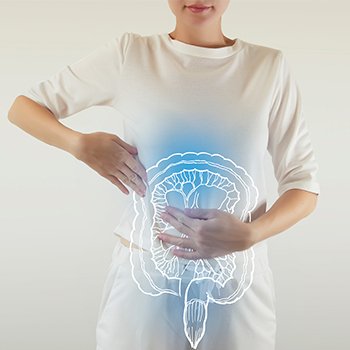โพสไบโอติกส์: ประโยชน์เชิงสุขภาพและโอกาสในอุตสาหกรรมอาหาร Postbiotics: Human Health Benefits and Opportunities in the Food Industry
1866 Views |

โพสไบโอติกส์: ประโยชน์เชิงสุขภาพและโอกาสในอุตสาหกรรมอาหาร
Postbiotics: Human Health Benefits and Opportunities in the Food Industry
By: สิริลักษณ์ วุฒิมงคลกุล
Siriluk Wuttimongkolkul
Researcher
Yamamori R&D Center
siriluk@yamamoritrading.com
โพสไบโอติกส์และผลกระทบเชิงสุขภาพ
"โพสไบโอติกส์" ได้รับการจำกัดความโดยสมาคมนานาชาติทางวิทยาศาสตร์สำหรับโพรไบโอติกส์และพรีไบโอติกส์ (The International Scientific Association of Probiotics and Prebiotics; ISAPP) ว่าเป็น "สารทางชีวภาพที่ถูกสร้างขึ้นและ/หรือส่วนประกอบของจุลินทรีย์ที่ไม่มีชีวิต ที่ให้ประโยชน์เชิงสุขภาพต่อโฮสต์" ทั้งนี้ โพสไบโอติกส์ที่ได้รับการวิจัยอย่างกว้างขวางในด้านการให้ประโยชน์ต่อร่างกายโฮสต์ ได้แก่
1. กรดไขมันสายสั้น (Short chain fatty acids; SCFAs)
กรดไขมันสายสั้นเป็นสารที่มีองค์ประกอบของคาร์บอน ถูกสร้างขึ้นโดยจุลินทรีย์ดีในลำไส้ในระหว่างกระบวนการหมักของคาร์โบไฮเดรตที่ไม่สามารถย่อยได้ โดยมีรายงานเกี่ยวกับผลเชิงบวกของการใช้กรดไขมันสายสั้นในการรักษาเยื่อบุลำไส้ การป้องกันความผิดปกติของระบบภูมิคุ้มกัน การควบคุมโรคอ้วน ตลอดจนการส่งผลต่อระบบหัวใจและหลอดเลือด
2. เอนไซม์
จุลินทรีย์กลุ่ม Bacillus เป็นแหล่งสำคัญของเอนไซม์โปรติเอส เนื่องจากสามารถผลิตเอนไซม์สำหรับย่อยโปรตีนได้ในปริมาณมาก และมีความเสถียรสูงภายใต้สภาวะที่รุนแรง
3. วิตามิน
จุลินทรีย์กลุ่ม Bifidobacteria และ Lactobacilli มีความสำคัญต่อการผลิตวิตามินที่จำเป็น เช่น กลุ่มวิตามินบี วิตามินซี กรดโฟลิก และวิตามินเค
กลไกการส่งเสริมโพสไบโอติกส์ด้วยอาหารหมักสำหรับการจัดการโรคไม่ติดต่อเรื้อรัง
1. โรคเบาหวาน คือสภาวะทางเมแทบอลิซึมที่ทำให้มีระดับน้ำตาลในเลือดสูง และเกิดความผิดปกติในการหลั่งฮอร์โมนอินซูลิน ทั้งนี้ มีงานวิจัยอ้างอิงเกี่ยวกับการรับประทานโยเกิร์ตที่มีโพรไบโอติกส์ เช่น Lactobacillus plantarum 152 และ Lactobacillus rhamnosus ที่นำมาซึ่งประโยชน์ในการปรับสมดุลจุลินทรีย์ในลำไส้ของผู้ป่วยโรคเบาหวาน อันนำไปสู่ผลการลดการตอบสนองต่อระดับน้ำตาลในเลือด รวมถึงการส่งเสริมระบบเผาผลาญกลูโคสอีกด้วย
2. โรคหัวใจและหลอดเลือด เอนไซม์หลายชนิด เช่น เอนไซม์สลายไฟบริน (Fibrinolytic enzyme) อย่างนัตโตะไคเนส (Nattokinase) ที่พบอยู่ในอาหารหมักสามารถยับยั้งความรุนแรงของโรคหัวใจและหลอดเลือดและความดันโลหิตสูงได้อย่างมีประสิทธิภาพ โดยจะช่วยระบบการไหลเวียนโลหิตด้วยการสลายไฟบรินและส่วนประกอบของไฟบริน จึงช่วยลดการแข็งตัวของเลือดและป้องกันการเกิดโรคหัวใจและหลอดเลือดได้ในที่สุด
3. โรคอ้วน นักวิจัยพบว่าสารพอลิฟีนอลในชาอูหลงสามารถช่วยลดความเสี่ยงของโรคอ้วนด้วยการสร้างกรดไขมันสายสั้น (SCFAs) ที่มีอิทธิพลต่อจุลินทรีย์ในลำไส้ในมนุษย์ได้ นอกจากนี้ยังสามารถลดภาวะโรคอ้วนในหนูทดลองได้โดยจะส่งผลต่อการทำงานของชั้นป้องกันในลำไส้ (Intestinal barrier) ซึ่งนำไปสู่การทำงานของผนังลำไส้ที่ดีขึ้น ลดความเครียดของปฏิกิริยาออกซิเดชัน และลดการอักเสบในลำไส้
"Postbiotics" are specified by The International Scientific Association of Probiotics and Prebiotics (ISAPP) as "a preparation of inanimate microorganisms and/or their components that confers a health benefit on the host". Postbiotics that have been most widely researched include:
1. Short-chain fatty acids
Short-chain fatty acids (SCFAs) are primary carbon-based metabolites generated by intestinal microbes during fermentation of non-digestible carbohydrates. There are reports on the positive effects of high-dosage SCFA treatment on colon epithelium, protection against the development of immune disorders, obesity control, and cardiovascular effects.
2. Enzymes
Bacillus is a significant source of proteases, producing high amounts of neutral and alkaline proteolytic enzymes.
3. Vitamins
Bifidobacteria and Lactobacilli are important for producing essential vitamins like vitamins B, ascorbic acid, folic acid, and vitamin K.
Mechanism of Fermented Foods Promoting Postbiotics for NCDs Management
1. Diabetes mellitus is a metabolic condition that causes high blood sugar levels and problems with the secretion of insulin. There is research referenced on eating yogurt contains probiotics like Lactobacillus plantarum 152 and Lactobacillus rhamnosus, which can be beneficial in balancing the gut microbiota of people who have diabetes, leading to a reduction in glycemic response and improvement in glucose metabolism.
2. Cardiovascular diseases Various enzymes such as fibrinolytic enzyme like nattokinase, which are present in fermented foods, can effectively inhibit progression of cardiovascular diseases and hypertension. They also improve blood circulation by breaking down fibrin and their components, ultimately reducing blood clotting and preventing cardiovascular diseases.
3. Obesity Researchers have found that polyphenols in oolong tea can help in reducing obesity by generating SCFAs that influence the gut microbiota in humans. It can also reduce obesity in rats by affecting the intestinal barrier functions. This led to better integrity of the intestine walls, decreased oxidative stress, and lessened intestinal inflammation.






